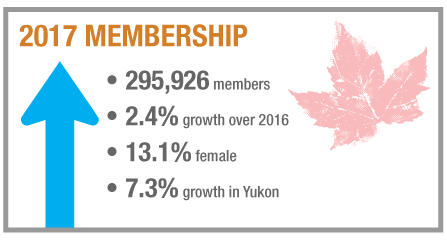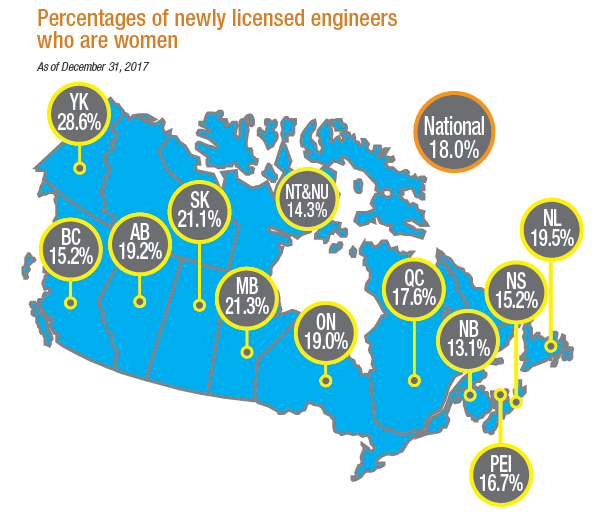
This week Engineers Canada released its 2018 National Membership Report. The report gathers annual information on the provincial and territorial engineering regulators’ membership, providing timely and accurate information about the engineering profession in Canada. This year’s report presents data from the 2017 calendar year and indicates steady growth of the profession with some notable gains in the proportion of women joining the profession.

 This week Engineers Canada released its 2018 National Membership Report. The report gathers annual information on the provincial and territorial engineering regulators’ membership, providing timely and accurate information about the engineering profession in Canada. This year’s report presents data from the 2017 calendar year and indicates steady growth of the profession.
This week Engineers Canada released its 2018 National Membership Report. The report gathers annual information on the provincial and territorial engineering regulators’ membership, providing timely and accurate information about the engineering profession in Canada. This year’s report presents data from the 2017 calendar year and indicates steady growth of the profession.
Total membership in the provincial and territorial regulators, excluding students, grew to 295,926, which marks a 2.4 per cent gain. Excluding APEGS, there were 8,988 newly licensed engineers in 2017, a number that has increased by 7.8 per cent nationally since 2016.
Overall female membership in the profession increased by 5.2 per cent, compared to 2.0 per cent for males. While this means that the total proportion of women to men in the profession is growing, it is still comparatively low at 13.1 per cent, up from 12.8 per cent in 2016.
 Since 2016, Engineers Yukon has experienced the largest percentage of growth in membership, at 7.3 per cent, and the regulator also had the greatest increase in female membership, with 27.3 per cent growth. In terms of female membership, the Northwest Territories and Nunavut Association of Professional Engineers and Geoscientists (NAPEG), and Engineers Geoscientists Manitoba were also leaders, coming in at 11.2 and 11.1 per cent, respectively.
Since 2016, Engineers Yukon has experienced the largest percentage of growth in membership, at 7.3 per cent, and the regulator also had the greatest increase in female membership, with 27.3 per cent growth. In terms of female membership, the Northwest Territories and Nunavut Association of Professional Engineers and Geoscientists (NAPEG), and Engineers Geoscientists Manitoba were also leaders, coming in at 11.2 and 11.1 per cent, respectively.
Engineers Yukon also had the highest proportion of newly licensed engineers who were women at 28.6 per cent. They were followed by Engineers Geoscientists Manitoba and Professional Engineers & Geoscientists Newfoundland and Labrador (PEGNL), with 21.3 and 19.5 per cent, respectively.
Regarding place of residence, there were 169,261 practising professional engineers licensed in the jurisdiction where they resided, a number that remains consistent with previous years in terms of its proportion to the larger profession.
Other notable findings from the report:
- Engineers who are women are more likely to reside in the jurisdiction where they practise than men (88.0 vs. 81.3 per cent)
- Nationally, there were 4.6 engineers per 1000 people;
- Approximately 47.7 per cent of engineering graduates from 2013 went on to attain licensure by the end of 2017


